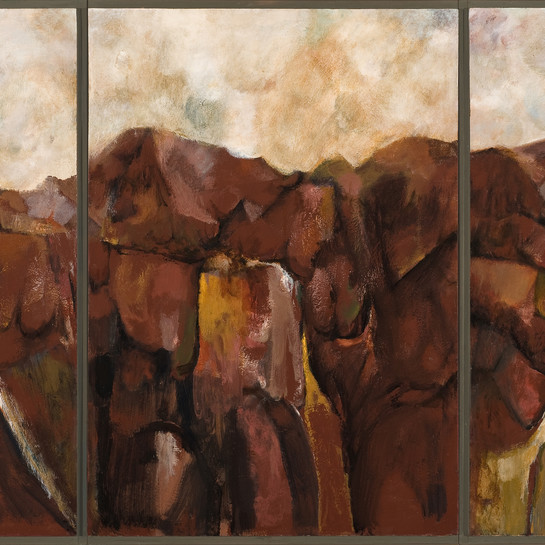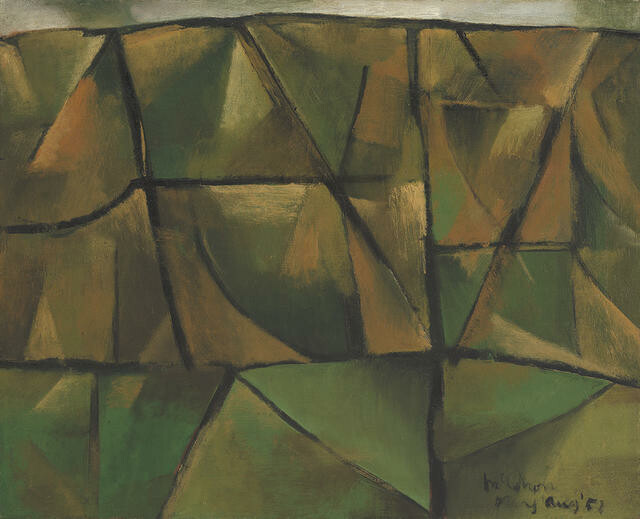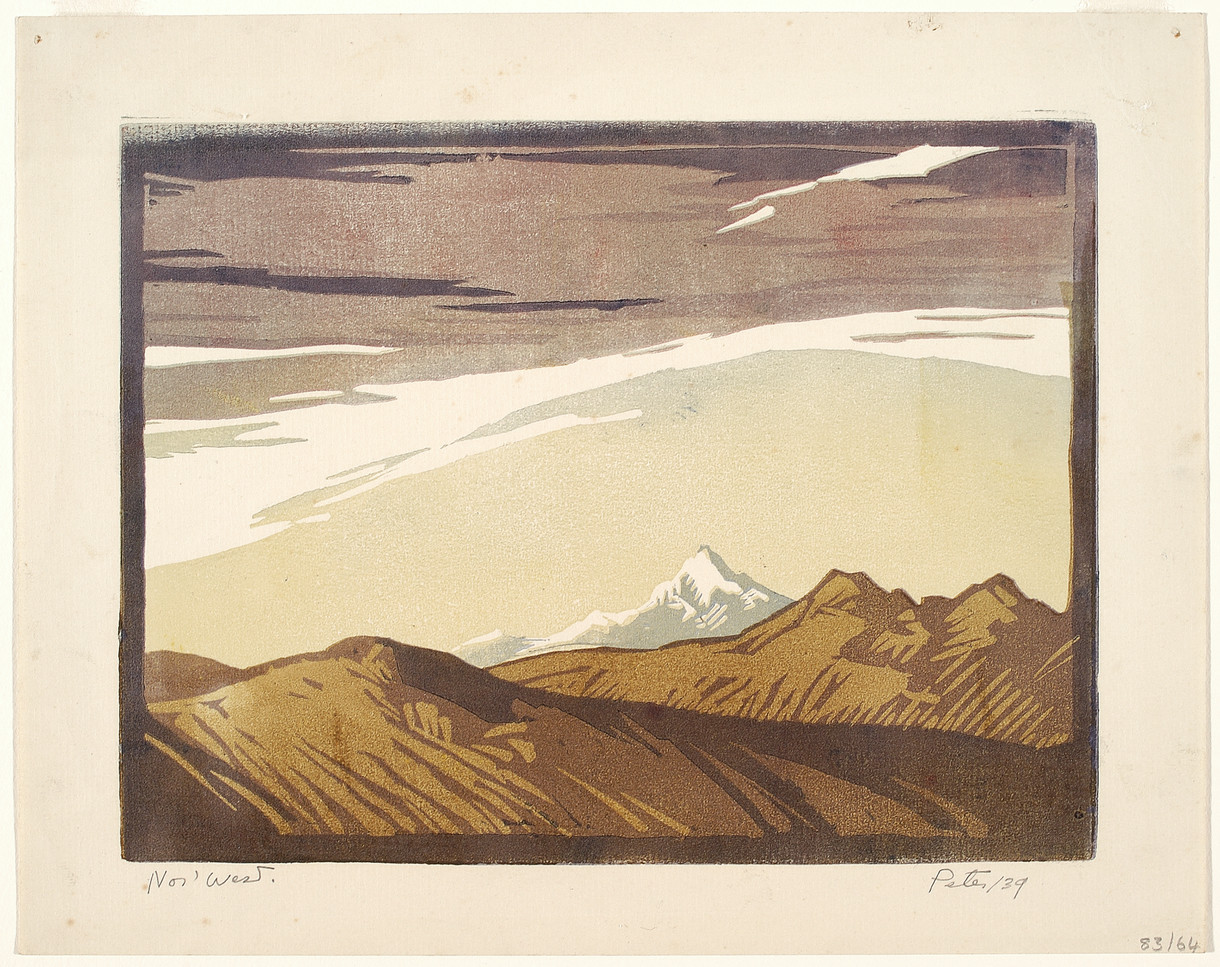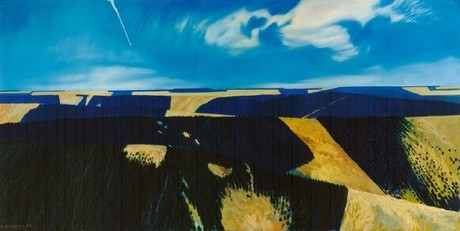Colin McCahon
Aotearoa New Zealand, b.1919, d.1987
Canterbury Landscape
- 1952
- Oil on canvas
- Purchased with the support of Christchurch City Council's Challenge Grant to the Christchurch Art Gallery Foundation, 2014.
- Reproduced courtesy of Colin McCahon Research and Publication Trust
- 761 x 890mm
- 2014/088
Tags: abstraction, landscapes (representations), natural landscapes
'Pākihi is a word for a place that is bare or without trees. The Pākehā surveyors called these cleared areas parkee from the Māori word for no trees, pākihi. Kā Pākihi-Whakatekateka-A-Waitaha: the treeless place, the joyous strutting march through the treeless land of south Canterbury, Waitaha – that’s the old name for the Canterbury Plains.' —Sir Tipene O’Regan
(He Rau Maharataka Whenua: A Memory of Land, 17 September 2016 – 18 February 2017)
Exhibition History
In the vast emptiness, 8 January - 21 August 2016
The immense scale of the Canterbury Plains, stretching away into the distance, is the subject of this painting. Based on aerial photographs of North Canterbury, the perspective, with just a sliver of sky on the horizon, compresses and tilts the landscape into various simplified shapes of paddocks, divided and defined by shelter belts. Colin McCahon’s interest in cubism at the time was spurred by time spent studying under Mary Cockburn Mercer, an elderly Australian artist who had studied with some of the original cubists in Paris in the early twentieth century.
When asked in 1976 what effect the flatness of Canterbury had on his painting in the early 1950s, McCahon's reply centred around the division of space: “[T]he simple division is one I’ve used ever since. It was a discovery at the time, it was a real discovery.”














